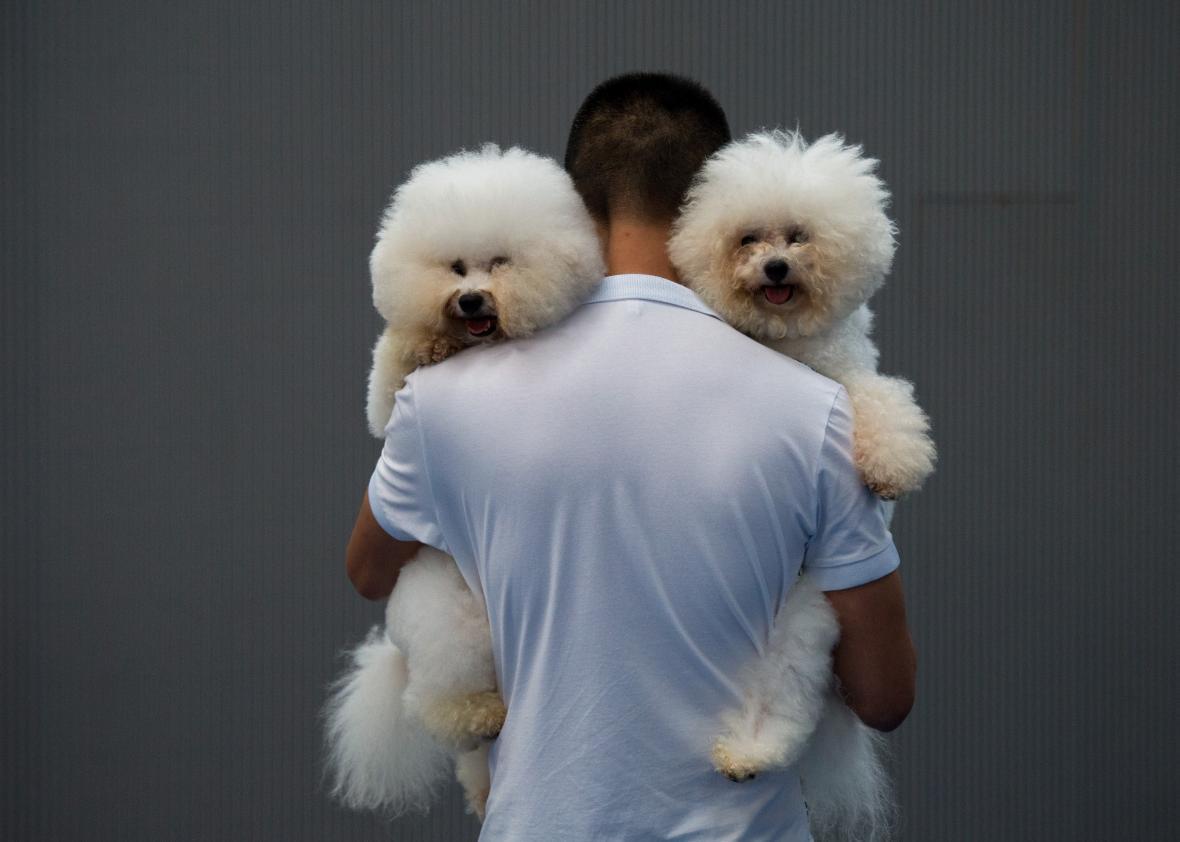Pets certainly know how to sink their teeth into a household budget. In 2015, my poodle’s long-lasting stomach virus set my family back by almost four figures. Later in the year we got an even heftier bill for a canine root canal.
I’m not alone. Spending on animal medical needs has soared over the past two decades. According to an annual survey by the American Pet Products Association, Americans spent $15.4 billion on veterinary care in 2015. Could it be that pets are experiencing a similar uptick in the cost of medical care as their human masters?
Yes, it could—as economics professors Liran Einav and Amy Finkelstein and Ph.D. candidate Atul Gupta point out in a new working paper, “Is American Pet Health Care (Also) Uniquely Inefficient?” It’s actually a useful comparison. Much of the blame for the sharp rise in American medical spending traditionally falls at the door of our ridiculously inefficient medical system. One theory posits that a combination of opaque costs, lack of consumer knowledge, and generous insurance coverage is driving the surge. Put people in managed-care situations and raise their deductibles so that they have more “skin in the game,” as politicians and wonks are wont to say, and watch the spending plummet. But it hasn’t worked out that way. Out-of-pocket medical spending for people with employer-provided health insurance has soared by more than 50 percent since 2010. And the animal world might just give us a clue why.
While vetinary spending has some things in common with medical spending on humans—health care crises tend to arrive unexpectedly for all kinds of creatures—there are many differences, ones that might suggest animal medical bills would increase at a slower rate. Pet health insurance, while an increasingly popular product, is still relatively rare, with less than 1 percent of pet owners purchasing a policy. There is no such thing as Medicare for elderly canines and felines. Moreover, options to sue in the event of veterinary malpractice are quite limited. Animals are traditionally viewed as property by the courts, which means that financial damage is generally defined as the cost of replacing the pet (with maybe a few thousand dollars for loss of companionship, assuming there’s a particularly sympathetic judge or jury). Multimillion-dollar awards, no matter how egregious the misconduct or great the pet’s suffering, are all but unknown.
But as the paper’s authors document, animal medical spending appears to be increasing at a faster rate than the human equivalent. Data from the federal Consumer Expenditure Survey shows that between 1996 and 2012, our own health care spending surged by almost 50 percent while pet medical spending jumped by 60 percent. During the same period, the percentage of physicians increased by 40 percent while the supply of veterinarians all but doubled.
Einav, Finkelstein, and Gupta also look at the cost of end-of-life care. Data from an unnamed California veterinary clinic finds owners of dogs who died from lymphoma experienced a sharp uptick in spending in the last month of their pets’ lives, while Medicare data shows the same occurs for humans at an earlier point—three to four months earlier. (The authors note that clients at the anonymous animal medical center are “likely … significantly richer than the average dog owner.”) Yes, the cost of the pet care is cheaper, but it’s not free.
So why are we spending more on animal health care? First, just like humans, animals are benefiting from medical advances that increase their lifespan—so much so that canine dementia is a growing problem. But, unlike humans, we don’t need to treat ill pets. We choose to do so. A visit to the vet isn’t necessary. As economists would say, it’s a luxury good. Some of our spending is driven by desire.
Let’s go back to my poodle for a minute. The root canals—yes, there ended up being several—were not the only course of treatment I could have chosen for my dog. The vet told me she could also pull the impacted teeth. A root canal would need to be done by a specialist, and add significantly to the bill. I signed off without hesitating. I wanted Katie to continue to enjoy her favorite food and toys—and so she does. Was it emotionally satisfying? Yes. But economically rational? No.
It’s likely the same is true for some percentage of animal and human medical care—although of course there are many, many factors at play with the increases in the cost of the latter. A healthy life is a thing we feel is worth spending money on, and so many of us use our own funds to do it—whether it’s for ourselves or for Fido. The paper’s authors conclude with a call for more study of other industries to deepen our understanding of medical costs. For now, it’s not hard to suspect that, at least when it comes to health care, our pets are a canary in the coal mine.
